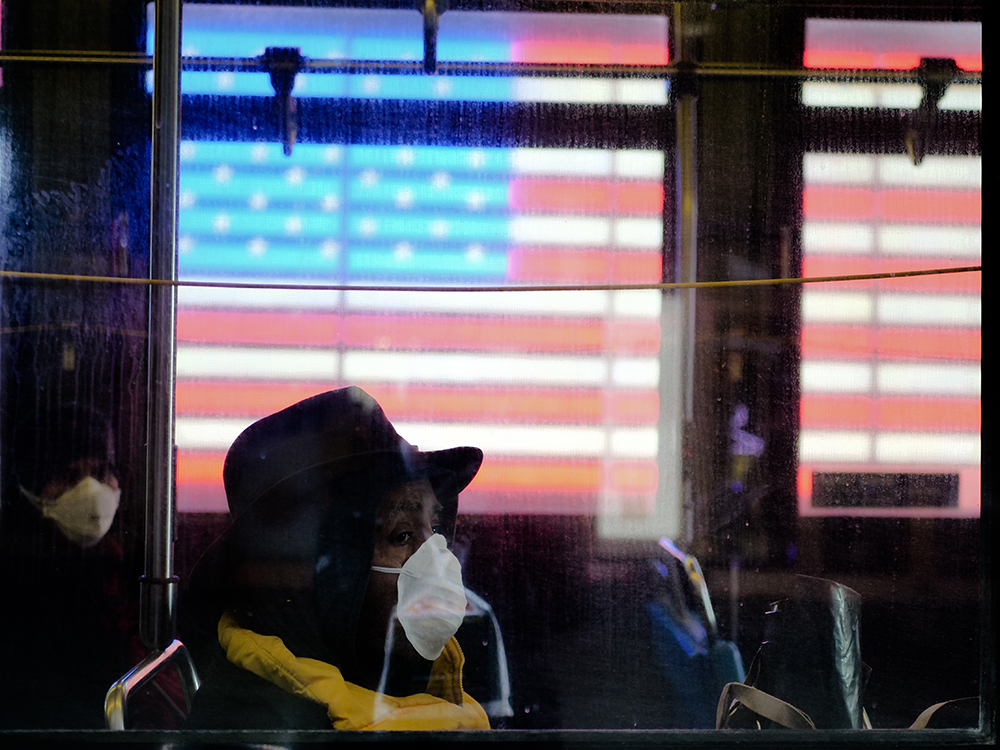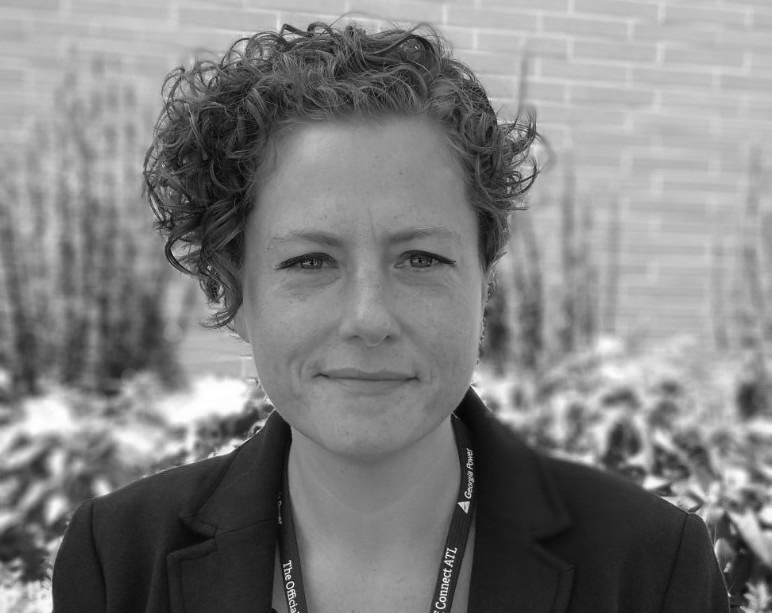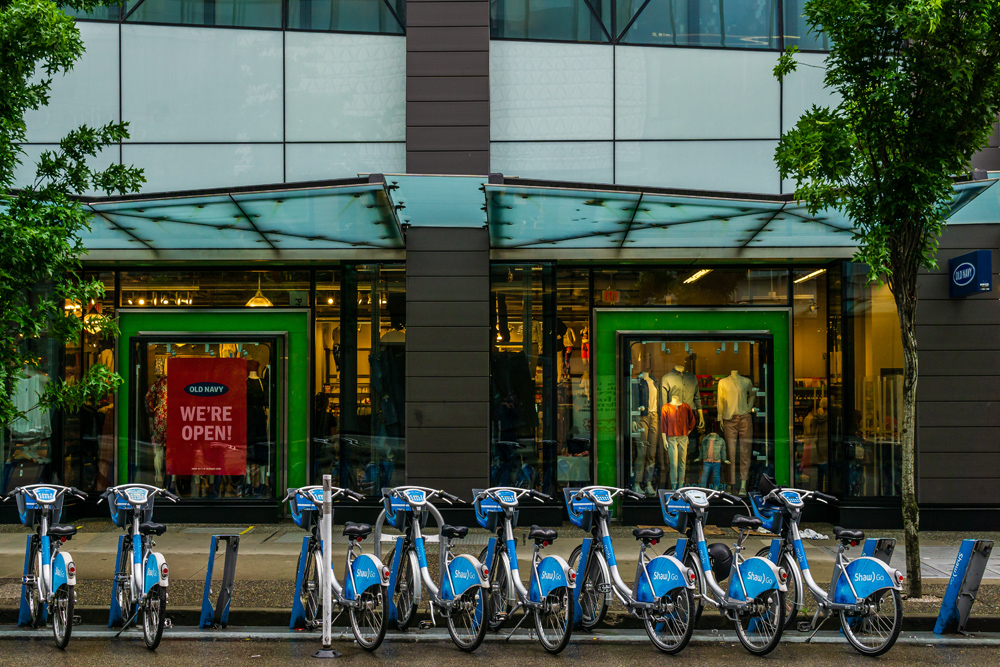
Laura Chace, ITS America’s new president and CEO, said she was “thrilled and humbled” to get the job.
Formerly chief operating officer, leading operations and strategic planning, she replaces Shailen Bhatt, who has left to join Aecom.
Bhatt called her “the right person to lead this organisation at a pivotal time in our industry”.
It’s certainly a busy time. Chace has a bulging in-tray but kindly agreed to speak to ITS International in her first week in the job.
She is buoyant about the possibilities. “We are entering this time of potential historic investment in transportation, with Congress poised to adopt the Infrastructure Investment and Jobs Act here in America,” she says.
“This is our best opportunity to show how deploying technology can transform transportation in a way to make meaningful differences for people - no matter who they are or where they live. Our focus is to really educate and tell the story of how technology can help overcome existing barriers in the transportation system and deliver a robust system that will provide more equitable access to safer and cleaner mobility and allow opportunities for everybody to thrive.”
MobilityXX: Diverse perspectives
She adds: “And in order to shape the future, one thing that I’ve been very passionate about is the fact that we must include more diverse perspectives and voices at the table to ensure we lift everyone as we make these investments in our system.”
ITS America’s MobilityXX initiative, of which Chace is a founding member, is a prime example of this – more of it later.
As she takes over from Bhatt, Chace is not looking at a radically divergent plan of action from her predecessor. “Well, I would say our priorities remain the same,” she says. Chief among these is to champion the roll-out of Vehicle to Everything (V2X) technology – an issue which has led it into a very public disagreement with the Federal Communications Commission (FCC). More of that later, too.
Despite the reduction in travel caused by the Covid-19 pandemic, the US Governors Highway Safety Association (GHSA) recorded a 20% year-on-year spike in the rate of pedestrian deaths in the first six months of 2020. The US National
Safety Council said that the fatality rate on the country’s roads increased by 24% - the highest increase in nearly 100 years, even as driving decreased.
The shocking truth, then, is that fatalities are actually going up, suggesting that the US has a major problem with road safety.
“We are facing a really critical moment: 40,000 people die on our roads, every year, and last year when so many fewer people were driving, there was an increase in fatalities,” Chace says. “This is important to everyone who cares about road safety, with fatalities increasing particularly among vulnerable road users. ITS America is really focused on V2X technologies. We’ve also seen a renewed commitment to reducing emissions in the transportation sector. The climate reports that we see are increasingly dire, and the impacts are devastating.”
Are we ready for climate change?
As we speak, the US has been hit by Hurricane Ida, resulting in devastation in Louisiana and flooding in New York City’s subway. President Joe Biden has set out a goal to cut emissions by 50% by the end of the decade, and ITS America “will advocate to use the tools we have to make this transition to a cleaner transportation fleet, and to curb emissions from our sector”.

Reducing congestion is another priority. “With the pandemic, a lot of congestion disappeared but it’s coming back, and we have great technologies that can reduce congestion and improve safety,” Chace says. “We want to make sure that we’re promoting all of those, along with newer technologies, such as AVs, which we know are going to be very key in the future in improving safety on our roadways and helping us work toward economic inclusion for all different communities.”
Does Chace have a sense that people are prepared for the necessary changes which may impact them significantly in order for transport to become greener?
“That’s a good question,” she says. “I think that obviously the general public understands the impacts of climate change and the need to move to more sustainable transportation. I think that one of the reasons that we are going to be able to make this move is because of this infrastructure bill - because, as you said, there are a lot of changes that have to be made in behaviour.”
There are also technological challenges, such as creating enough electrical charging capacity on the road network and improving the resiliency of the grid. “There are a lot of changes to supply chains for the batteries that have to be addressed,” she continues. “And the funding from this bill will go a long way to helping to make that happen. I think once the public sees that these changes and these investments are happening, then they will be more likely to make the changes in their own choices that will help get us to a lower-emission future.”
ITS America has global focus
While ITS America obviously has a domestic focus, it has an international reach as an organisation through partnerships and the fact that many of its members are multinationals.
“The reality is that infrastructure in America needs this investment, and our major cities are trying to compete globally with cities in Asia and others that have state-of-the-art technology and much higher levels of infrastructure spending,” Chace says. “The investment is going to spur innovation, both here and globally. ITS America values our global role and our global partnerships, and we would use those partnerships to also help show what new investments or new technology deployments are happening here and how they can be used in other places. And similarly, we also learn from cities around the world. So, I think it would be a win-win for the global community to have increased investment in the US. And as you know, so many of our companies are globally focused so I think there’s lessons and use cases that can be very transferable.”
What's happening with 5.9 GHz?
And so to the FCC. ITS America is robust when it comes to defending members’ interests – and the wider issue of road safety. In June, along with the American Association of State Highway and Transportation Officials (AASHTO), it filed an appeal against the FCC’s November 2020 order regarding unlicenced devices in the 5.9 GHz spectrum band.
The two organisations are seeking to reverse the FCC’s reallocation of 60% of the 5.9 GHz band to unlicenced, non-transportation uses, and preserve the full 75 MHz for transportation communications.
ITS America criticised the FCC’s decision as ‘reckless’ as well as ‘shortsighted and detrimental’ and is taking the legal action to ensure V2X technologies “can continue to safely operate throughout the 5.9 GHz band”.
Chace sums up the current position. “We are in the midst of the legal challenge: briefs have been submitted, there is a schedule for further briefings this Fall,” says Chace. “We anticipate a potential opportunity for a hearing early in 2022, and then the potential for a decision, perhaps by spring. That is our best estimate, but it’s of course up to the court. On the legal front, that’s where we are. As you may know, the FCC also has a current proceeding opened where we are working with them on the remaining 30 megahertz and we’re talking about our priorities, such as making sure that there’s no interference in the spectrum, making sure that we can secure reimbursement for the incumbent licensees who would have to move, and making sure that we’re advocating for additional spectrum elsewhere for future needs.”
Promoting women in transportation
Chace brings significant experience to her new role. She has worked in trade associations in the telecoms and transportation industry and has been at ITS America since 2015. “That has given me a great understanding and appreciation for our membership and the potential of technology to really transform transportation,” she says. “Quite honestly, what matters to me is the outcomes that we can have to improve our lives. Part of what I bring is my own lived experience and my own perspective.”
That sense of the importance of the personal is behind ITS America’s MobilityXX initiative, which seeks to promote the role of women in the transportation sector.
“It is really based on this premise that we need diverse perspectives around the table to lift everyone in order to represent all of the communities that we are purporting to serve,” she says. “I think that my background really does give me a different perspective to bring to the table: everybody’s perspective and everybody’s unique experience is different.”
MobilityXX and 10 by 10
MobilityXX is a partnership between ITS America, one of its member companies, The Ray, and WTS International Foundation. “We have all launched this initiative because we recognise that women are very under-represented in the transportation industry,” explains Chace. “We make up only 15% of a 14.8-million-person workforce. And we’re even more under-represented at decision-making levels, and the impact of that is the transportation systems we have don’t always meet the needs of women.”
The knock-on effects of this lack of input are myriad. “Women are used to paying more for safe transportation,” she continues. “Women use the system differently: we end up using multiple modes perhaps in one day or in one sitting; we end up losing time and that can equate to reduced economic opportunity - because your access to transportation is so intricately linked to economic opportunity. MobilityXX is focused on the need to have more diverse perspectives in the transportation workforce so that we can actually create these outcomes for safer, more equitable choices for all.”

In October it is launching a pledge programme for the industry. “We are asking public sector and private sector organisations to commit to taking two actions to increase the number or influence of women. Examples are things like having diverse hiring panels: when you’re hiring for positions, committing to interview diverse candidates; or things like creating a sponsorship programme for women in your company and committing to increase the number of women on your boards.”
Even diversifying speaker panels will help ensure that conference programming involves different perspectives. “There are a number of options,” Chace says. “Our goal in this is to increase the number of women in the industry by 10% over 10 years. And one of the reasons that’s significant is because census data shows us that over the past 15 years, the number of women in the industry only increased by 3%. We’re challenging the industry to come together and participate in this ’10 by 10’: 10% over 10 years. And the goal is to not only lift women but to create better outcomes for all within our transportation sector.”
Is 10 by 10 achievable?
And does she believe that 10 by 10 is an achievable figure? “I think that it is,” she says confidently. “When you look at what organisations and companies are doing, there’s a lot of talk about diversity, equity and inclusion, and there’s definitely action on that front. But what we have found is that within our industry there’s a desire and a recognition of the need to increase that. What we are hoping to do by launching this pledge is to actually create a platform where companies and organisations can take that action, and commit. And I do think that it’s possible to reach those goals.”
As with other big current questions such as climate change and sustainability, there does seem to be a sense of cut-through in public and political debate about issues of equity. With MobilityXX, ITS America sees itself as providing a platform which demonstrates how organisations can take practical steps.
“Yes, exactly,” concludes Chace. “And the items that we’ve chosen, in terms of what companies can commit to do, they do produce results. The more people, the more companies and organisations we can get to commit to this, we do believe that we will see results.”












